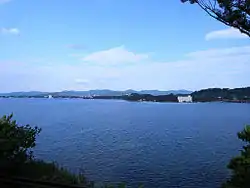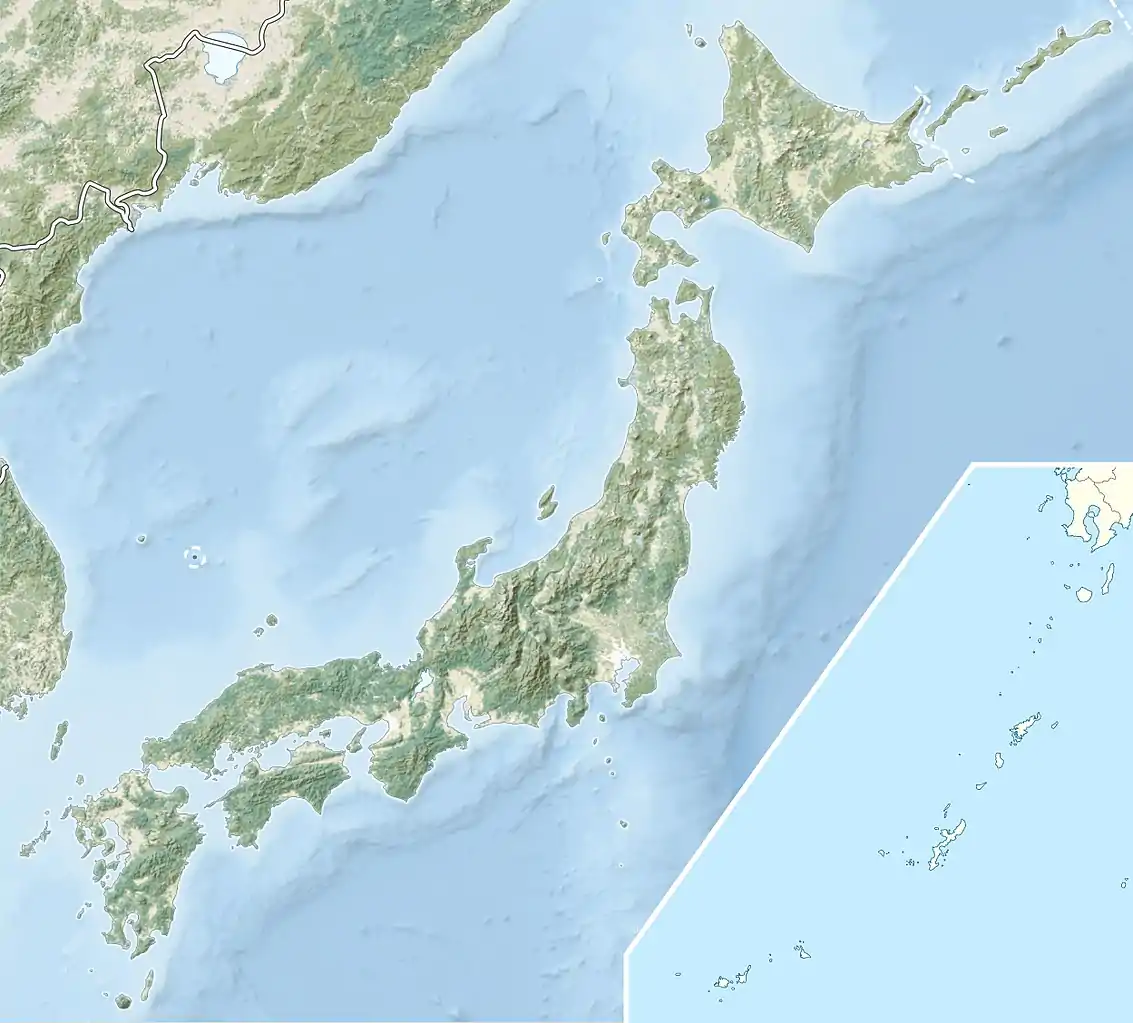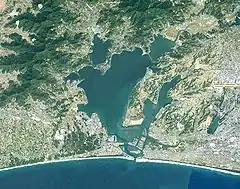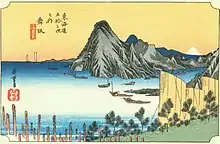Lake Hamana
Lake Hamana (浜名湖, Hamana-ko) is a brackish lagoon in Shizuoka Prefecture, Japan. Formerly a true lake, it is now connected to the Pacific Ocean by a channel. As an internal body of water, it is considered Japan's tenth-largest lake (by area). It spans the boundaries of the cities of Hamamatsu and Kosai.
| Lake Hamana | |
|---|---|
 A view from Hamanako Service Area | |
 Lake Hamana | |
 Landsat image | |
| Location | Shizuoka Prefecture |
| Coordinates | 34°44′28″N 137°34′11″E |
| Type | Brackish lagoon |
| Primary outflows | Pacific Ocean |
| Basin countries | Japan |
| Surface area | 65.0 km2 (25.1 sq mi) |
| Average depth | 4.8 m (16 ft) |
| Max. depth | 16.6 m (54 ft) |
| Water volume | 0.35 km3 (280,000 acre⋅ft) |
| Shore length1 | 114 km (71 mi) |
| Surface elevation | 0 m (0 ft) |
| 1 Shore length is not a well-defined measure. | |
Data
The lake has an area of 65.0 km2 and holds 0.35 km3 of water. Its circumference is 114 km. At its deepest point, the water is 16.6 m deep. The surface is at sea level.
Economic activity
Lake Hamana is a commercial source of cultivated Japanese eel, nori, oysters and Chinese soft-shelled turtles. Fishers take sea bass, whiting, and flounder, among others. The lake has been developed as a resort area, with boating as a feature.
History

In ancient times, Lake Hamana was a freshwater lake. However, a great earthquake in 1498 altered the topography of the area and connected the lake to the ocean. As a result, the water in the lake is now brackish.
The old name for this lake is Tohotsu-afumi (遠つ淡海), which means "distant fresh-water lake" and later changed phonologically to Tōtōmi (遠江). From the perspective of the capital in the Kinai, Tōtōmi is more distant than the other famous lake, Chikatsu-afumi or Ōmi (now Lake Biwa), the "nearby fresh-water lake." The name Tōtōmi was also used for a former province in which the lake is located (Tōtōmi Province).
At the end of World War II two experimental Type 4 Chi-To tanks were dumped into the lake to avoid capture by Occupation forces. One was recovered by the US Army, but the other was left in the lake. In 2013, there were efforts to locate the remaining tank, but it wasn't found.[1]
References
- Takagi, Shogo Lake Hamana searched for WWII sunken tank April 17, 2013 The Japan Times Retrieved April 3, 2016
Sources
This article incorporates material from the article 浜名湖 (Hamanako) in the Japanese Wikipedia, retrieved on December 11, 2007.
External links
 Media related to Lake Hamana at Wikimedia Commons
Media related to Lake Hamana at Wikimedia Commons- 浜名湖 (PDF) (in Japanese). (260 KiB) (Hamanako), Ministry of Land, Infrastructure and Transport (Japan)
- 浜名湖サイクリングロード (PDF) (in Japanese). (719 KiB) (Hamanako Cycling Road), Ministry of Land, Infrastructure and Transport (Japan)